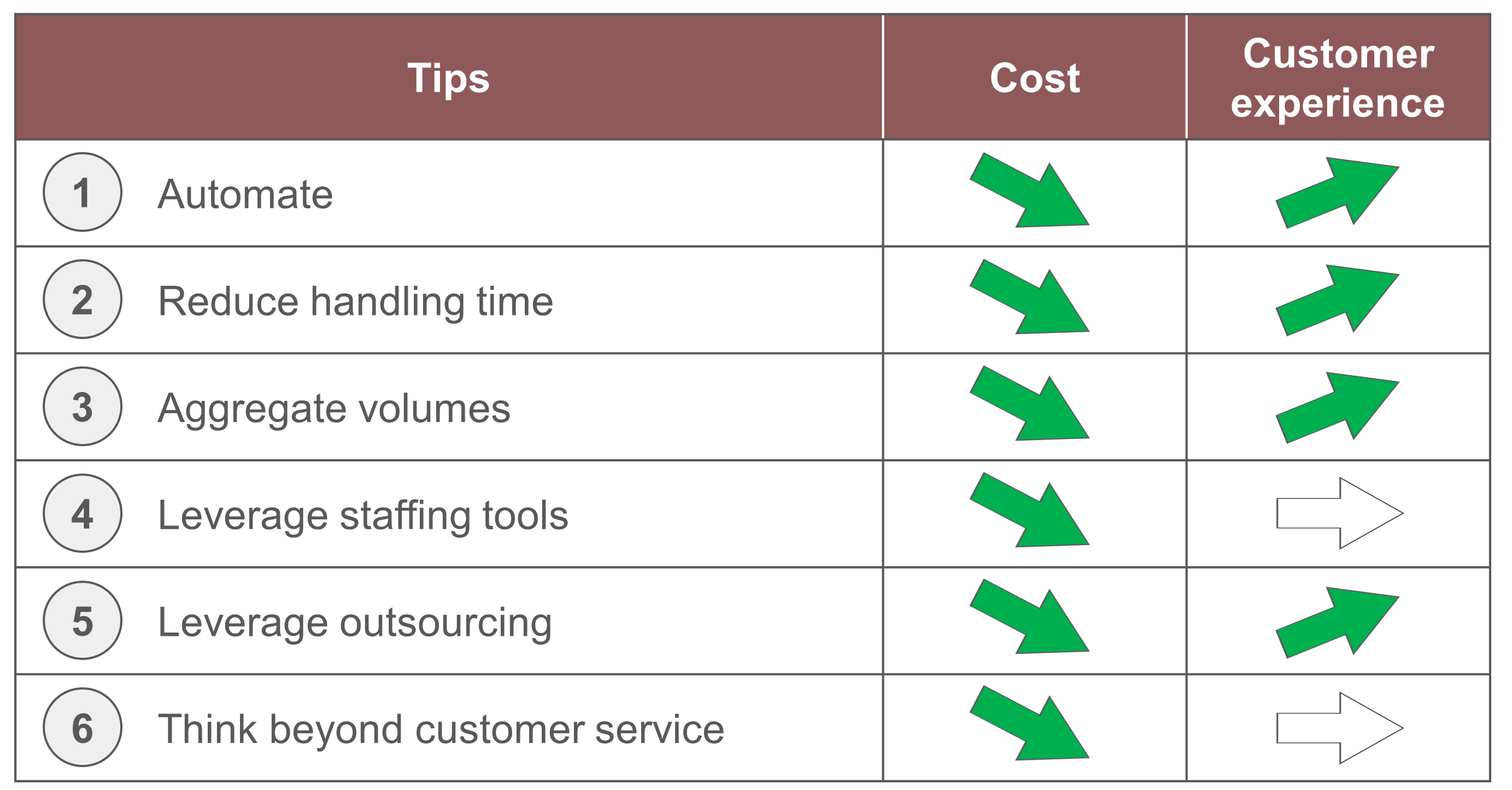1. AUTOMATE
Consumers are increasingly becoming accustomed to resolving issues themselves, and there is a growing need to have efficient and simple tools in place via digital channels. Eliminate, automate or semi-automate cases that lack upsell opportunities and achieve more efficient use of resources. Dedicate resources in the organization specializing in automation, who can put full focus on the task. For larger organizations with a high volume of cases, the return on investment is significant.
2. REDUCE CASE HANDLING TIME
Shorter and faster cases that are resolved more efficiently generally lead to a better customer experience. At the same time, it drives down staffing requirements and costs. Reduce case handling times by:
- Measure and compare by individual performances and by case type
- Understand how efficient individuals are able to resolve cases quickly and accurately
- Define actions and prioritize
3. AGGREGATE VOLUMES
Aggregating incoming volumes in common queues result in significant economies of scale when service level requirements are high, e.g. for certain telephone support services requiring short response times.
In the example below, with three equally sized units theoretically merged into one unit, the service level can be increased from about 70% to 95% resolved cases within 30 seconds with the same staffing. Alternatively, the total staffing can be reduced by about 14% without negatively affecting the service level.

Aggregation of queues may conflict with the need for specialist knowledge for certain case types. Manage this through online training, coaching, FAQ development for multi-skilling, combined with more efficient skill-based routing, re-channeling of cases etc.
4. LEVERAGE STAFFING TOOLS
A properly dimensioned organization is the basis for cost-effectively achieving the right quality and meeting customers’ service expectations. An overstaffed organization is costly, and an understaffed organization leads to a decline in service and quality. Utilize one of the efficient resource management and staffing tools available on the market. Implement it from forecasting to scheduling and real-time management for all channels and cases.
A common perception is that higher quality is in conflict with lower costs. We have a different view.
5. LEVERAGE OUTSOURCING
In our experience, the major customer service providers have effective tools in place for improvements. The leverage from utilizing vendor expertise is high but requires a good vendor partnership.
The key to successful outsourcing is the right set of capability requirements combined with a win-win commercial model that drives the supplier to continuous improvements. In addition, a well-dimensioned and effective sourcing organization with a clear mandate to manage the supplier on a daily basis is required.
6. THINK BEYOND CUSTOMER SERVICE
How a case is handled often has a major impact on costs in other parts of the business outside of customer service, such as home visits by broadband support engineers, insurance claims handling or credit risk for bank customers. Reduce indirect subsequent costs by:
- Outline the entire case chain
- Analyze cost drivers for the subsequent impact of the case chain
- Define measures to avoid subsequent costs without negative customer impact
- Prioritize for implementation











